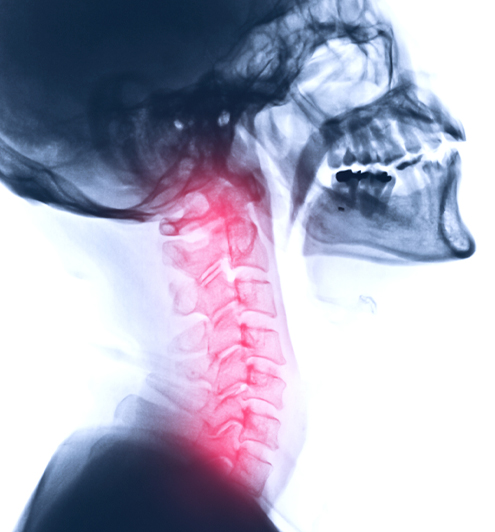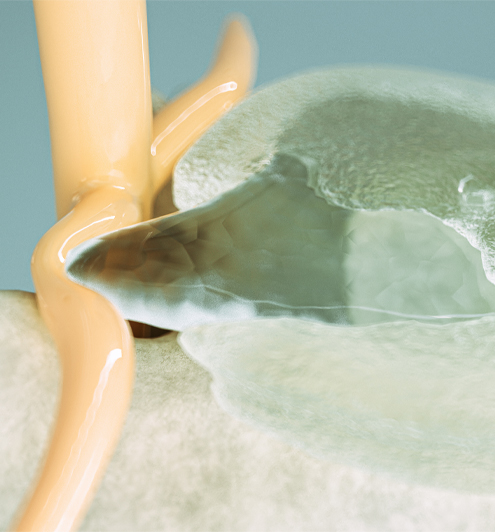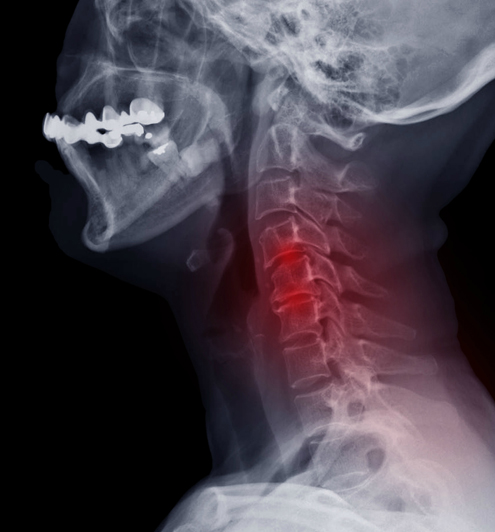SPINE SURGERY
NECK PAIN
Myofascial Pain/Muscle Spasm
Spondylosis
Whiplash
Disc Herniation
Degenerative Disc Disease
Spinal Stenosis
Myelopathy
Myofascial Pain/Muscle Spasm
Myofascial pain syndrome in the neck is thought to be a form of muscle pain that may result from a single trauma to a muscle or from repetitive minor trauma over time. These painful trigger points in your neck develop in susceptible muscle tissues that are overworked for long periods of time. Stress, poor sleep and physical deconditioning have a significant effect on worsening symptoms. With a spine-specialized physical therapy symptoms of myofascial pain syndrome typically resolve.


Spondylosis
Spondylosis in the neck is a general term for degenerative arthritic changes of the cervical spine, or more simply arthritis. while generally thought to occur as we age, these changes can happen at any age. Patients may be at increased risk to have early spondylosis if they participate in high impact sports, have heavy labor jobs, a history of previous neck injury as well as history of smoking. Genetics also does play a role in those with spondylosis. Symptoms often can include headaches, limited range of motion, crepitus (a grinding noise which may be heard with movement), or pain with certain activities or positions.
Whiplash
Whiplash is a common injury to the soft tissues of the neck that can happen when the neck suddenly moves backward and then forward. The soft tissues that can be involved in a whiplash injury include the ligaments and the muscles of the neck that support the head and hold it erect. The most common reasons for whiplash include motor vehicle accidents, sporting injuries, or falls from a height. People with whiplash may have neck pain, stiffness, and tightness radiating from the head out into the shoulders and upper back. Whiplash can range from mild to severe.


Disc Herniation
A herniated disc in the neck may occur when too much force is exerted on an otherwise healthy intervertebral disc. Heavy forces on the neck may simply be too much for even a healthy disc to absorb. A disc herniation, by definition, is displacement of disc material beyond the normal confines of the disc space. The terms disc protrusion, disc bulge, disc herniation, ruptured disc, and slipped disc all mean the same thing and imply that disc material has left the normal disc space. Treatment of a herniated disc depends on the severity of symptoms and apparent nerve damage. Most disc herniations improve in six weeks to three months from the initial injury.
Degenerative Disc Disease
Degenerative Disc Disease in the neck is a condition that involves weakening of one or more vertebral discs which normally act as a cushion between the vertebrae. This condition can develop as a natural part of the aging process but may also result from an injury. When the disc degenerates the disc begins to lose many of the properties which make it a good shock absorber. This process can cause considerable pain and spasms.


Spinal Stenosis
Spinal Stenosis refers to a narrowing of the spinal canal to a degree where the spinal cord or nerve roots may be compromised. Symptoms depend on whether narrowing affects the spinal nerve roots, the spinal cord, or both. If only spinal nerve roots are involved the patient will experience radiculopathy with symptoms radiating into their arms and hands. Cervical spinal stenosis does tend to progress with ongoing degenerative changes.
Myelopathy
Myelopathy describes any neurologic symptoms related to the spinal cord and is a serious condition as it can cause permanent spinal cord injury. This occurs from pressure on the spinal cord from spinal stenosis, a disc herniation, and bone spurs. Myelopathy is a very serious condition that if untreated can lead to significant and permanent nerve damage including paralysis and death.

